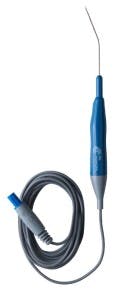
Turbinate Coblation

The inferior turbinates are important structures in the lower portion of the nose. The inferior turbinates main goal is to filter air and help humidify the air we breathe. In some cases, however, especially with allergies, the turbinates can become enlarged, blocking airflow from inside the nose. In addition, the inferior turbinates, when over active, can release excess amount of nasal drainage (termed rhinorrhea). While there are a variety of techniques for turbinate reduction, one technique gaining popularity is subumucosal coblation turbinate reduction.
Coblation refers to a type of controlled, non-heat driven process that decrease the molecular bonds of tissues to effectively decrease the volume of tissue. To be more specific, coblation is when particles in a plasma break molecular bonds of tissue causing them to shrink. A plasma is when electrolytes in a medium such as saline solution are excited (energized).
The main advantage of coblation is that the surrounding tissues are not heated. Most of the heat is taken up by the plasma layer.
In inferior turbinate coblation procedures, a wand is passed inside the turbinate to help volumetrically shrink the turbinate. This creates two main benefits. First of all, the turbinates are decreased in size, facilitating breathing. In addition, drainage from the nose is often reduced.
Coblation inferior turbinate reduction can be performed in the office setting with little to no oral sedation. Patients often have little downtime. Most patients take up to two weeks to see benefits in breathing. Patients can have multiple wanding procedures for further reduction in turbinate tissue.


